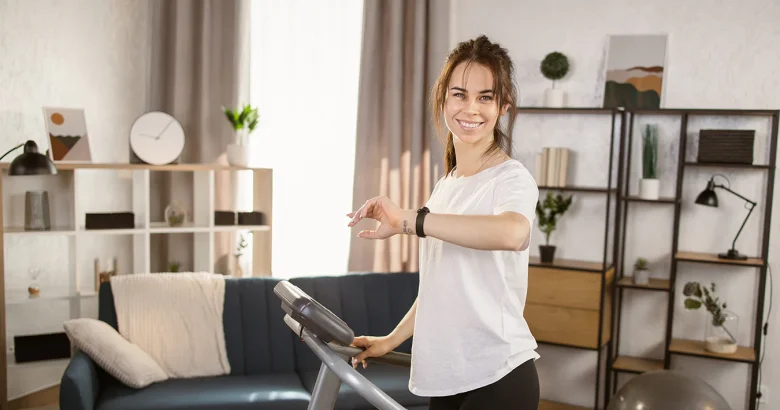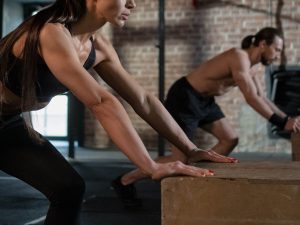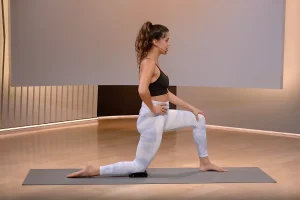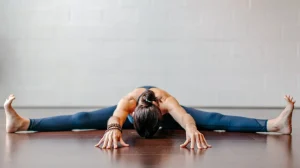Aerobic exercise, also known as cardiovascular exercise, is one of the best ways to improve overall health. Aerobic exercise strengthens the heart, increases heart rate, and improves blood circulation throughout the body. Heart disease, high blood pressure, and diabetes are just a few of the chronic diseases that can be prevented with regular exercise. Aerobic exercise is essential for maintaining a healthy weight and improving overall health because it improves heart health, boosts metabolism, and burns calories.
Effective Cardio Workouts You Can Do at Home
You don’t have to go to the gym to reap the health benefits of exercise. There are many exercises you can do at home that require almost no equipment. For example, mountain climbers, jumping jacks, high knees, and running in place can increase heart rate and strengthen heart function. If you’re short on space, you can still do effective aerobic exercise by climbing stairs or dancing to upbeat music. Variety in your workouts keeps exercise fun and ensures that all major muscle groups are engaged, which is good for heart health and burns more calories.
Cardio for Weight Loss and Body Toning
Aerobic exercise strengthens the heart and increases its pumping efficiency. Regular exercise strengthens heart function, allowing it to better transport oxygen-rich blood throughout the body, improving overall physical fitness. A stronger heart also reduces the risk of heart disease and helps maintain safe blood pressure. Daily moderate- to high-intensity aerobic exercise helps the heart function better, lowers cholesterol, and maintains a healthy circulatory system. A healthy heart not only helps you perform better in sports but also helps you live a longer and healthier life.
The Importance of Consistency in Cardio Workouts
A major benefit of exercise is that it aids in weight loss. Aerobic exercise burns calories, helping you create a calorie deficit, which is essential for fat loss. Aerobic exercise also works multiple muscle groups simultaneously, which helps you gain muscle definition. It can also help you lose weight. Home workouts like jumping rope, aerobics, or circuit training can train your legs, core, and arms, making you leaner. Combining running with strength training is even more effective and helps with weight loss and muscle definition.
Cardio and Mental Well-Being
To maximise the benefits of aerobic training, you need to be consistent. Depending on your fitness level and training intensity, do aerobic training at least three to five times a week. Each session should last 20 to 45 minutes. Regular exercise improves your body’s resilience, enhances your endurance, and protects your heart in the long run. Regular exercise also promotes self-discipline and habits, making it easier to achieve your training goals. Over time, increasing the difficulty or duration of your workouts can continually challenge your physical limits and prevent plateaus.
Heart Health and Mental Health
Aerobic training is not only beneficial for your physical health but also for your mental health. Exercise releases endorphins, also known as “happy hormones”. Endorphins help reduce emotions like stress, anxiety, and sadness. Aerobic exercise can also improve your sleep, enhance your concentration, and increase your energy. Aerobic exercises at home are convenient and flexible, making them an ideal way to boost your mood and achieve your fitness goals. Daily movement can make you feel better and maintain a positive mindset.
Significant Results with Minimal Equipment
You don’t need to buy expensive equipment or join a gym to do aerobic exercise. You can use everyday tools like jump ropes, resistance bands, or even chairs (for example, for step exercises) to increase the intensity of your workout. On the other hand, many exercises don’t even require any equipment: simply moving your body increases your heart rate. Anyone can do cardio, as it requires minimal equipment. You can create a personalised workout plan based on your space, preferences, and fitness level, which is not only good for your heart but also burns a lot of calories.
Designing a Balanced Home Cardio Routine
A comprehensive cardio workout at home should include both low- and high-intensity exercises to truly push your body’s limits. Start with a warm-up to prepare your muscles and joints. Then alternate short bursts of high intensity with longer periods of low-intensity exercise or active rest. This method, called interval training, helps you burn more calories, avoid boredom, and improve your cardiovascular endurance. By incorporating various exercises into your workout routine, you keep your entire body active, improve coordination, and reduce the risk of injury. This makes your workouts both effective and enjoyable.
Track Your Progress and Stay Motivated
To stay motivated and continuously improve your cardiovascular fitness, you need to track your progress. To monitor your long-term progress, record the exercises you perform, their duration, intensity, and heart rate. Setting achievable goals, such as increasing the number of repetitions or extending your workout time, gives you a sense of accomplishment and motivates you to keep going. You can use online resources, fitness apps, or workout videos to make your cardio workouts at home more fun and engaging. Record your workouts regularly to ensure they’re both challenging and enjoyable.
Conclusion
Doing cardio at home is a simple and effective way to maintain a healthy heart, lose weight, and boost your energy. You don’t have to go to the gym to create a fun and energetic workout plan. Just do some simple exercises like jumping jacks, high knees, mountain climbers, and dance moves. Regular cardio can improve heart function, burn calories, build muscle, and improve your mental state. To achieve lasting results, you need to be consistent, progressive, and motivated. If you stick with it and do cardio at home in a healthy way, it can help you live a healthier, stronger, and more energetic life.
FAQs
1. Can I lose weight by doing cardio at home?
Yes, regular cardio at home can burn calories, help maintain calorie balance, and, if you eat healthily, even help you lose fat.
2. How often should I exercise at home?
It is recommended to exercise three to five times a week. Depending on the intensity, each workout lasts between 20 and 45 minutes.
3. Do I need special equipment to exercise at home?
No, many exercises don’t require equipment. However, incorporating jump rope or step aerobics into your workout can enhance its effectiveness.
4. Does exercising make you feel better?
Absolutely. During aerobic exercise, the body produces endorphins. These can reduce stress, improve your well-being, improve sleep quality, and enhance your ability to concentrate.
5. Can I exercise at high intensity at home?
Yes, as long as you maintain excellent form, warm up properly, and gradually increase the intensity to prevent injuries.
6. Does exercise give you more energy to perform daily tasks?
Yes, regular aerobic exercise can indeed improve your endurance, making daily activities like walking, climbing stairs, or lifting objects easier and less tiring.




